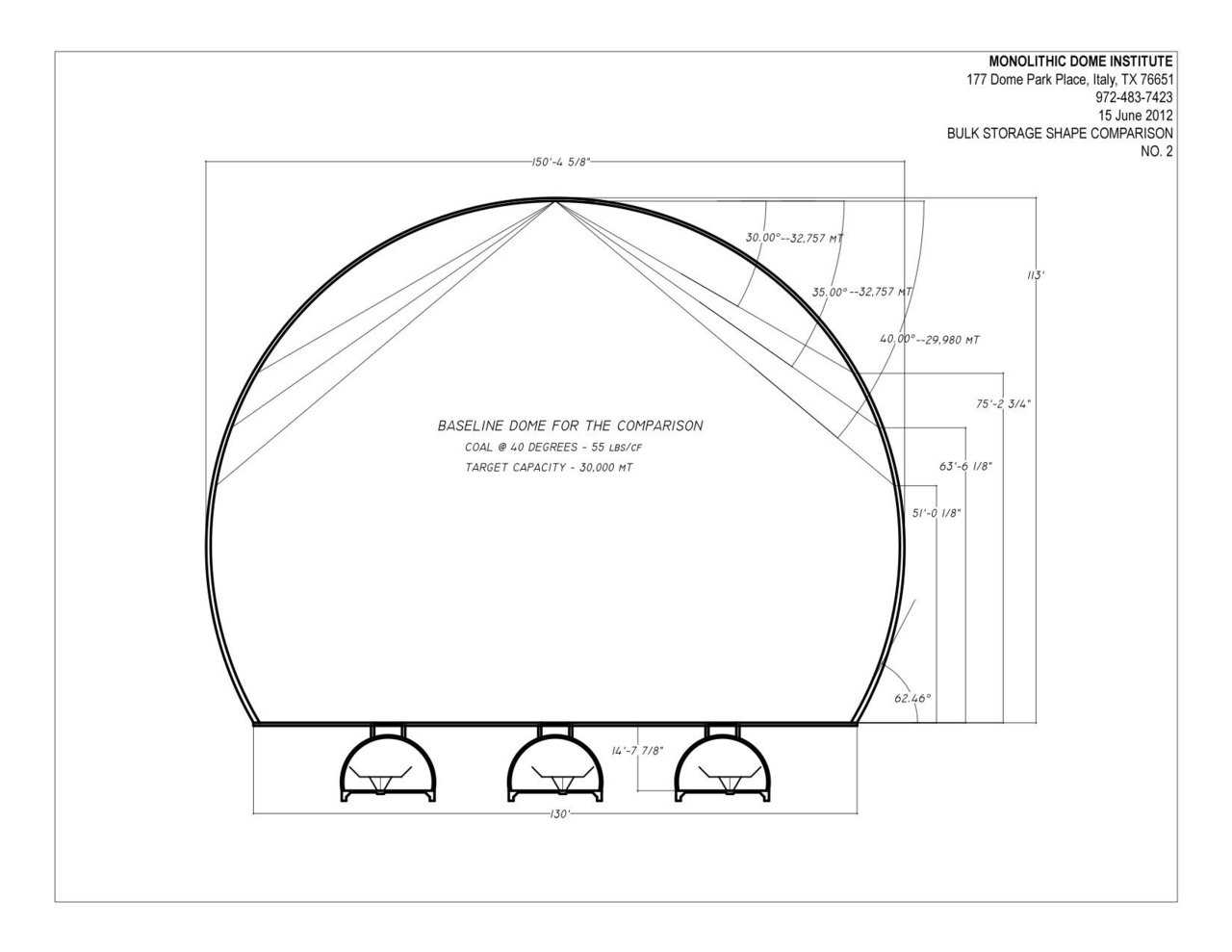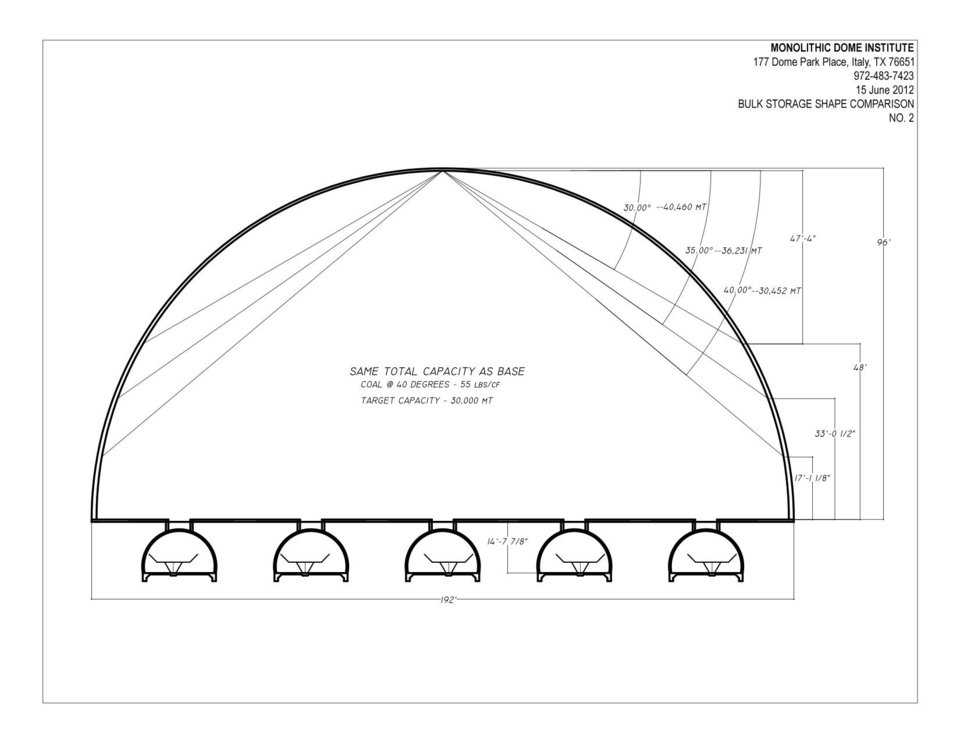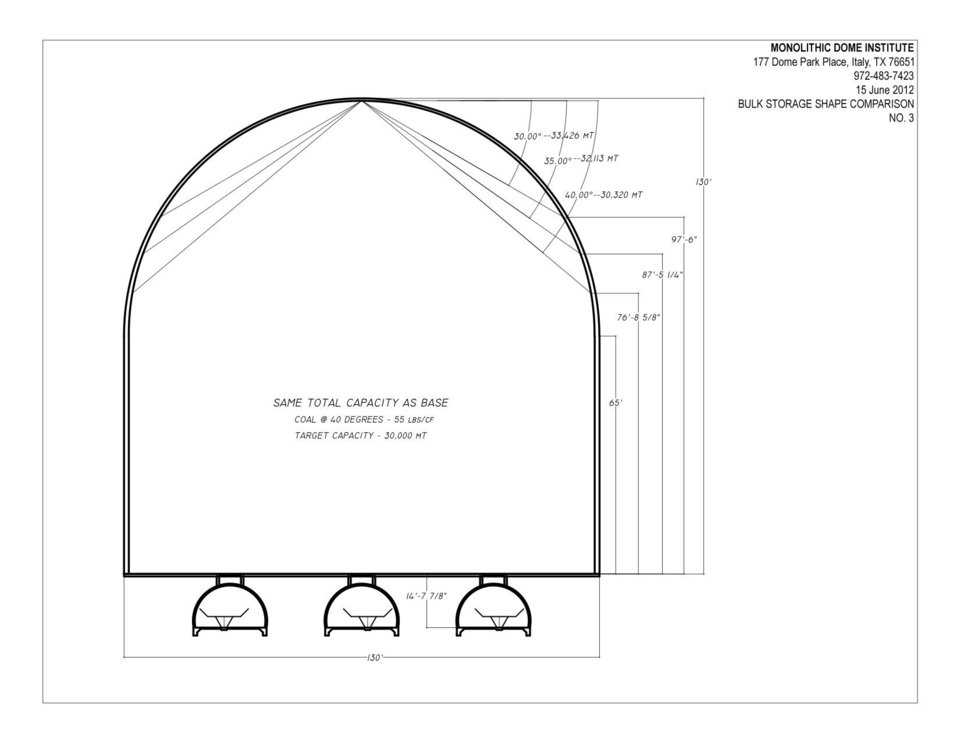
This shape will generally cost less per ton of storage because it is part of a sphere rather than a cylinder. This can be especially true if we are extracting the material through underfloor conveyors, as the stored materials are more concentrated at the floor level. The need for sweeping of the corners will be significantly reduced. (Larry Byrne)
Bulk storage improved — the 3/4 sphere Monolithic Dome
Shapes and Strength
Generally, traditional bulk storages, such as grain silos, cement silos and vertical grain bins, are cylinders. Sometimes they are rectangular, but usually such storages are silo shapes. There is a good reason for silo shape over the rectangular: For the same materials or cost, you get a far stronger shape with a cylindrical silo.
But the strength of a spherical shape beats both the cylindrical shape and the rectangular shape. In fact, the spherical shape is twice as strong as the cylindrical shape.
Why?
It’s simple math: The tension in the wall of the cylinder is equal to the radius of the cylinder times the pressure. The tension in a sphere is the same, but divided by two — hence half as much. This means less steel reinforcing and less concrete is needed to contain the pressure from the product.
For any single point on a cylinder, there is one arch running through it. But for any single point on a sphere, there are two arches.
Hence: If both the cylinder and the sphere are made of the same material, the sphere is twice as strong as the cylinder.
Bulk Unloading
Unloading bulk stored materials can be a major problem. Somehow the entire floor of the storage must be swept clear.
While different materials flow differently, most materials will flow to extraction holes in the the floor. From there, the material can be conveyed through tunnels to the load-out area.
The 3/4 Sphere
In a bulk storage that’s designed as a 3/4 sphere, the floor area is generally much smaller for the amount of material stored. The interior surface is sloped toward the center, hence concentrating the amount of area at floor level. In other words the area that needs to be swept to retrieve stored material is greatly reduced.
So, the 3/4 sphere is ideal for dropping the stored product into conveyors, and far fewer conveyors are needed.
And since the sphere is naturally stronger, you can reduce the amount of construction material needed to build it and still get the same amount of storage.

If conveyors are used under the floor, Design #1 utilizes far less conveyors and far less sweeping. If, however, underfloor conveyors will not be used, this shape has many advantages. A major advantage is that the pile is not so deep. This helps keep the loader operators from working under as many cliffs, as they remove the contents. (Larry Byrne)

At a site that is tight, it may be advantageous to go with the silo shape. The floor area is reasonable for underfloor extraction. The volume is large.But the wall pressure on the silo portion is huge. This dictates extremely large footings or in many locations, pilings to hold the load. This problem grows worse in poorer soil loading, such as along most waterways. The cost per unit stored will be much higher than that of the sphere. This is more traditional in shape. The spherical shape in the past was too hard to form and/or build. With the Monolithic System that is no longer the case. (Larry Byrne)